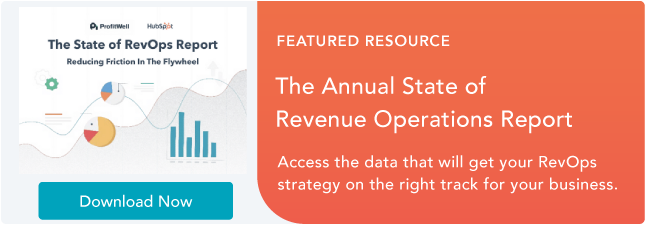Deciding how you’ll generate revenue is one of the most challenging decisions for a business to make, aside from coming up with what you’ll actually sell.
You want to ensure that you’re accounting for production costs, salaries for workers, what your consumers are willing to pay, and that you generate enough to continue business operations. You also want to make sure that your strategy fits with what you’re trying to sell.
Various revenue models will help you set your business on the right path. In this post, we’ll outline what they are and how to choose the right one for your company.
Revenue models are not to be confused with pricing models, which is when a business considers the products’ value and target audience to establish the best possible price for what they are selling to maximize profits. Once the pricing strategy is set, the revenue model will dictate how customers pay that price when they purchase.
RevOps teams also use pricing models to predict and forecast revenue for future business planning. Knowing where your money is coming from and how you’ll get it makes it easier to predict how often it will come in.
There are various revenue models that businesses use, and we’ll cover some below.
Types of Revenue Models
Recurring Revenue Model
Recurring revenue model, sometimes called the subscription revenue model, generates revenue by charging customers at specific intervals (monthly, quarterly, annually, etc.) for access to a product or service. Businesses using this model are guaranteed to receive payment at each interval so long as customers don’t cancel their plans.
Recurring Revenue Model Example
Businesses that benefit from recurring revenue models are service-based (like providing software), product-based (like subscription boxes), or content-based (like newspapers or streaming services). Businesses you may be familiar with that use this strategy are Spotify, Amazon, and Hello Fresh.
Affiliate Revenue Model
Businesses using affiliate revenue models generate revenue through commission, as they sell items from other retailers on their site or vice versa.
Sellers work with different businesses to advertise and sell their products, tracking transactions with an affiliate link. When someone makes a purchase, the unique link notes the responsible affiliate, and commission is paid.
Affiliate Revenue Model Example
Businesses you may be familiar with that use the affiliate revenue model include Amazon affiliate links and ticket promoting services. Influencers also use this model to advertise products from businesses and entice users to purchase them through custom links.
Advertising Revenue Model
The advertising revenue model involves selling advertising space to other businesses. This space is sought after because the advertiser (who is selling the space) has high traffic and large audiences that the buyer (who is purchasing the space) wants to benefit from to give their business, product, or service visibility.
Advertising Revenue Model Example
Various types of online businesses use this model, like YouTube and Google, and so do traditional outlets like newspapers and magazines.
Sales Revenue Model
The sales revenue model states that you make money by selling goods and services to consumers, online and in person. Therefore, any business that directly sells products and services uses this model.
Sales Revenue Model Example
Clothing stores that only sell their products in a storefront or business-specific retail website use the sales revenue model as they sell directly to consumers with no third-party involvement.
SaaS Revenue Model
The Software as a Service (SaaS) revenue model is similar to the recurring revenue model as users are charged on an interval basis to use software. Businesses using this model focus on customer retention, as revenue is only guaranteed if you keep your customers. The image below is the HubSpot Marketing Hub pricing page that uses the SaaS recurring subscription model pricing.
SaaS Revenue Model Example
Businesses using this revenue model include video conferencing tool Zoom, communication platform Slack, and Adobe Suite.
How to Choose a Revenue Model
Choosing a revenue model is entirely dependent on your specific business needs and your pricing strategy.
There is no one-size-fits-all solution, and some businesses have multiple revenue streams within their revenue model. For example, if you use a recurring revenue model, you still may sell advertising space on your website to other businesses because you have a high-traffic page.
There are some key factors to keep in mind, though:
1. Understand your audience.
When picking a revenue model, the most important thing to remember is the target market and audience your pricing strategy has identified. You want to understand their pain points and what model makes the most sense for charging them.
For example, if you’re a service that sells meal kits, your target audience is likely busy and wants the convenience of food that is set up and easy to make after a long day. Using the recurring revenue model makes sense, as you’ll automatically charge them on an interval basis, and they won’t have to remember to submit payment — speaking directly to their desire for convenience.
2. Understand your product or service.
It’s also essential to have an in-depth understanding of your product or service and how your audience will use it. For example, if you sell shoes, your audience likely won’t need a new pair every month, so it may make sense to go with the Sales Revenue Model. Instead, your customers can come to you directly every time they need a new pair.
Choose the Model That Best Fits Your Needs
Ultimately, choosing a revenue model is centered around understanding what makes the most sense for what you’re selling and what makes the most sense (and will be most convenient) for the audiences you’re targeting.
Take time to develop your pricing strategy, choose a revenue model aligned with it, and begin generating revenue.

![Download Now: 2021 State of RevOps [Free Report]](https://localseoresources.com/wp-content/uploads/2021/10/78dd9e0f-e514-4c88-835a-a8bbff930a4c-1.png)


Recent Comments